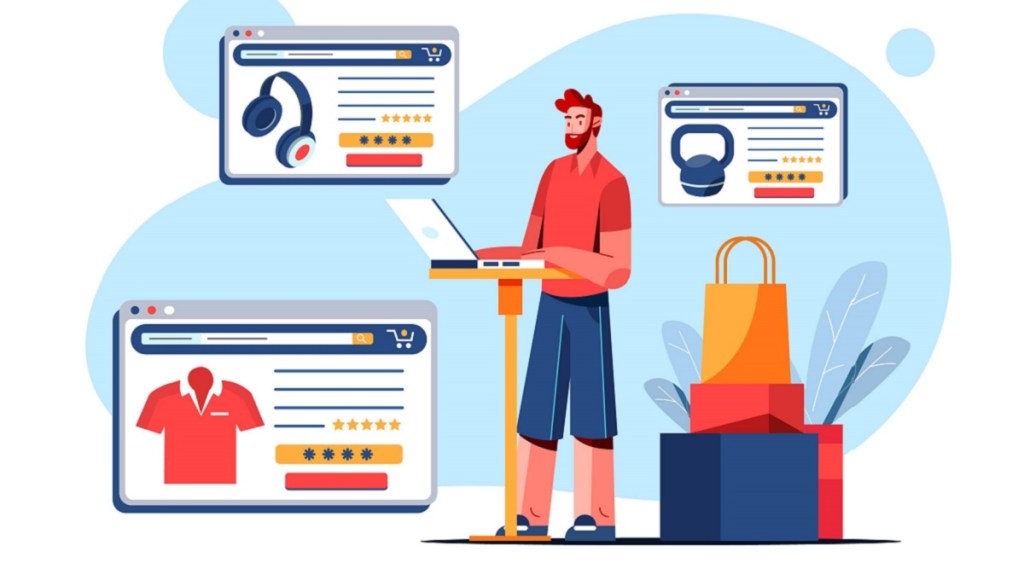– By Koteshwar LN
A robust B2B is the backbone of the retail sector. Post pandemic, the dynamics and the needs of businesses have changed. Adapting and adopting have become a way of life. However, at less than 50 per cent of digital adoption, the B2B industry was hugely impacted during the pandemic. The breakdown in the supply chain due to multiple intermediaries and bottlenecks created inefficiencies in the B2B commerce ecosystem. With increased pressure from consumers, the learning has been to reignite this sector with the help of technology.
There is massive disruption in how businesses operate today on the back of increased internet and smartphone adoption. With the mushrooming of B2B marketplaces, the traditional B2B commerce market is undergoing a seismic shift. As the businesses start to implement strategies to adapt to these changing dynamics, it is imperative to crystal gaze into some trends that are helping capitalize on the growing demand for online selling, digital connectivity, and an ever-increasing customer base.
Digital acceleration of B2B marketplace is here to stay
The pandemic has been a learning for everyone. There is a need to make India a digital first country. Hence, there is tremendous dependency on digital acceleration. Adding to this is the evolved consumer behaviour that has redefined the way consumers and businesses shop. Addressing the quality and reliability concerns surrounding the unorganized traditional B2B sector, it brought together sellers and buyers. Hence, as the digital touch points expand and gel into the day-to-day aspect of consumers and businesses, we are witnessing the world become a marketplace. It is here that the digitization of a B2B marketplace has the potential to catapult the trade economy of India.
Digitization of supply chain management at a rapid scale
Snarls in logistics and supply chains are undergoing a rapid digital transformation by leveraging new-age technologies. Technologies such as cloud computing and advanced analytics are replacing antiquated, labour-intensive business procedures bringing in greater efficiency. The need today is to offer bespoke offerings and services to customers. With standardized and effective data management being the foundation of many supply chain management technology initiatives, the application of advanced analytics is liberating the latent value in the ERP data. It empowers brands to learn more about the customers’ needs and customize offerings, inserting convenience and enhancing their shopping experience. Additionally, technologies such as robotics and sensors help complement existing tools such as inventory management software, thereby ensuring business-critical operations meet the customer demand.
Customer loyalty to see an upward trend
With consumers buying in-store and in-app, there is an increased expectation for a personalized experience tailored to their needs. The rise in competition to survive has resulted in businesses to place a high value on customers’ journeys to enable them to pick a product and complete the transaction in the offline store or avoid cart abandonment. Marketers have started to respect that with digitisation, it is imperative that marketing strategies change as well. With customers today demanding prompt and efficient service, utilizing personalized communications – an email, a custom-designed website, or one-on-one chat at a store, showcases businesses to be more approachable. This in addition to creating value-driven loyalty programs, maximizes the value of their businesses. Considering the high acquisition cost of a new customer in B2B business, such loyalty programs can aid the industry in retaining customers, thereby increasing repeat purchases. With studies showing that 80 per cent of a company’s average revenue comes from the most loyal customers, as businesses return to normal, customer loyalty is critical for them to thrive.
New access to credit and working capital
Changing consumer demands, constant technological progress, and the expansion of competitive businesses are the realities of the B2B market. However, for them to succeed, there is an urgent need to simplify the access and address the lack of credit. It is herein that the power of collaboration can truly reform the sector – leveraging the technical expertise of new-age companies and enabling access to finance from legacy financial institutions. Affordability constructs like Buy Now Pay Later (BNPL) on marketplaces provide additional comfort to financial institutions and B2B merchant companies to extend need-based credit to new-to-credit businesses.
Enabling sustainable business solutions
In their quest to tap the untapped market, it is imperative for B2B market players to find local relevance. Hence, as businesses enhance their omni-channel presence, increased focus or leveraging an efficient supply chain will be a key for sustainable business. Additionally, analysing data can enable marketplaces to ensure how well their supply chain is equipped to manage peaks especially during the key business days. This would not only enhance consumer experience but would also aim to grow their business.
Home to more than 89 million MSMEs, our country has witnessed a three times faster increase in spending than peer countries. The willingness to spend more on technology has increased manifold and so has the concentrated efforts from the government as well as other industry stakeholders to create awareness around the benefits of digital transformation. There is no better time than today to build technologies that suit the evolving needs of businesses. A technology that only enables safe and convenient digital commerce but also enhances the experience while accelerating their growth.
(Koteshwar LN is the Business Head of Flipkart Wholesale)


